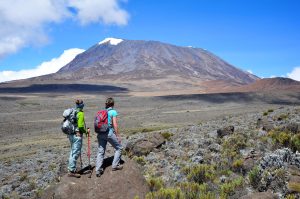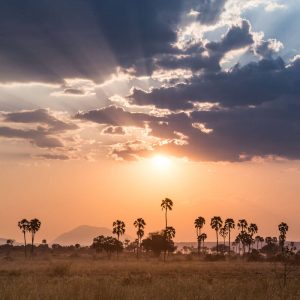Formation of the Ngorongoro Crater: A Geological Insight
Geological Forces at Work
The Ngorongoro Crater, located in Tanzania, is a geological wonder that has captivated scientists and tourists alike for centuries. The crater is the result of a complex interplay of geological forces that have shaped the landscape over millions of years.
One of the primary geological forces at work in the formation of the Ngorongoro Crater is volcanic activity. The crater itself is the collapsed caldera of a massive volcano that was once taller than Mount Kilimanjaro. This ancient volcano, known as Ngorongoro Volcano, erupted and collapsed in on itself over two million years ago, creating the vast crater that we see today.
In addition to volcanic activity, the Ngorongoro Crater has also been shaped by erosion. The crater walls are incredibly steep, with an average gradient of over 600 meters, making them some of the steepest in the world. This steepness is a result of millions of years of erosion caused by wind, rain, and the movements of glaciers during the last Ice Age.
The unique climate of the Ngorongoro Crater has also played a significant role in its formation. The crater is situated at a high altitude, which creates a cool and moist climate that is perfect for supporting a wide variety of plant and animal life. This climate has helped to preserve the crater’s ecosystem and has allowed it to thrive for millions of years.
Creation of Ngorongoro Crater
The creation of the Ngorongoro Crater began millions of years ago with the eruption of the Ngorongoro Volcano. This massive volcano was once taller than Mount Kilimanjaro and dominated the landscape of what is now northern Tanzania. However, around two million years ago, the volcano experienced a catastrophic eruption that caused it to collapse in on itself, forming the vast caldera that we see today.
After the collapse of the volcano, the Ngorongoro Crater began to take shape through the processes of erosion and sedimentation. Over millions of years, the crater walls were sculpted by wind and rain, creating the steep cliffs that now surround the crater floor. These cliffs are home to a wide variety of plant and animal life, making them one of the most biodiverse regions in Africa.
Today, the Ngorongoro Crater is a UNESCO World Heritage Site and a popular tourist destination for those looking to experience the unique beauty of the African savannah. Visitors can explore the crater floor on guided tours organized by Sunset Africa Safari, a leading tour operator in Tanzania. For booking requests and more information, clients can contact Sunset Africa Safari at info@sunsetafricasafari.com.
In conclusion, the formation of the Ngorongoro Crater is a testament to the power of geological forces and the resilience of nature. This ancient caldera is a reminder of the Earth’s ever-changing landscape and the incredible diversity of life that it supports.



